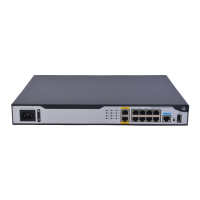337
The command enables the device to detect deadloops. If a thread occupies the CPU regularly, the device
considers that a deadloop has occurred. It outputs a deadloop message and reboots to remove the
deadloop.
Inappropriate use of the command can cause service problems or system breakdown. Make sure you
understand the impact of the command on your network before you use it.
Examples
# Enable kernel thread deadloop detection.
<Sysname> system-view
[Sysname] monitor kernel deadloop enable
Related commands
• display kernel deadloop
• display kernel deadloop configuration
• monitor kernel deadloop exclude-thread
• monitor kernel deadloop time
monitor kernel deadloop exclude-thread
Use monitor kernel deadloop exclude-thread to disable kernel thread deadloop detection for a kernel
thread.
Use undo monitor kernel deadloop exclude-thread to enable kernel thread deadloop detection for a
kernel thread.
Syntax
Centralized devices in standalone mode:
monitor kernel deadloop exclude-thread tid
undo monitor kernel deadloop exclude-thread [ tid ]
Distributed devices in standalone mode/centralized devices in IRF mode:
monitor kernel deadloop exclude-thread tid [ slot slot-number [ cpu cpu-number ] ]
undo monitor kernel deadloop exclude-thread [ tid ] [ slot slot-number [ cpu cpu-number ] ]
Distributed devices in IRF mode:
monitor kernel deadloop exclude-thread tid [ chassis chassis-number slot slot-number [ cpu
cpu-number ] ]
undo monitor kernel deadloop exclude-thread [ tid ] [ chassis chassis-number slot slot-number [ cpu
cpu-number ] ]
Default
Kernel thread deadloop detection monitors all kernel threads.
Views
System view
Predefined user roles
network-admin

